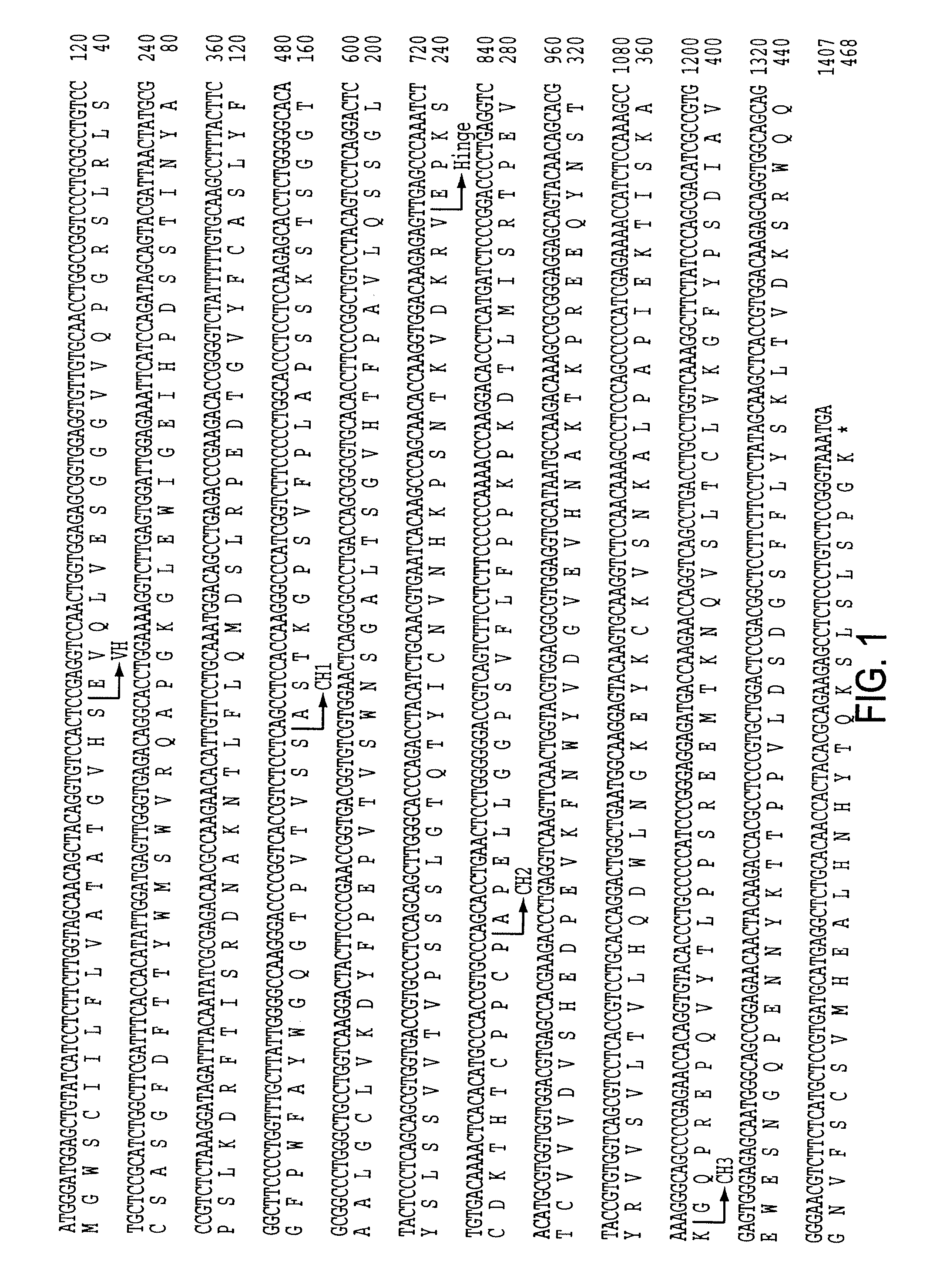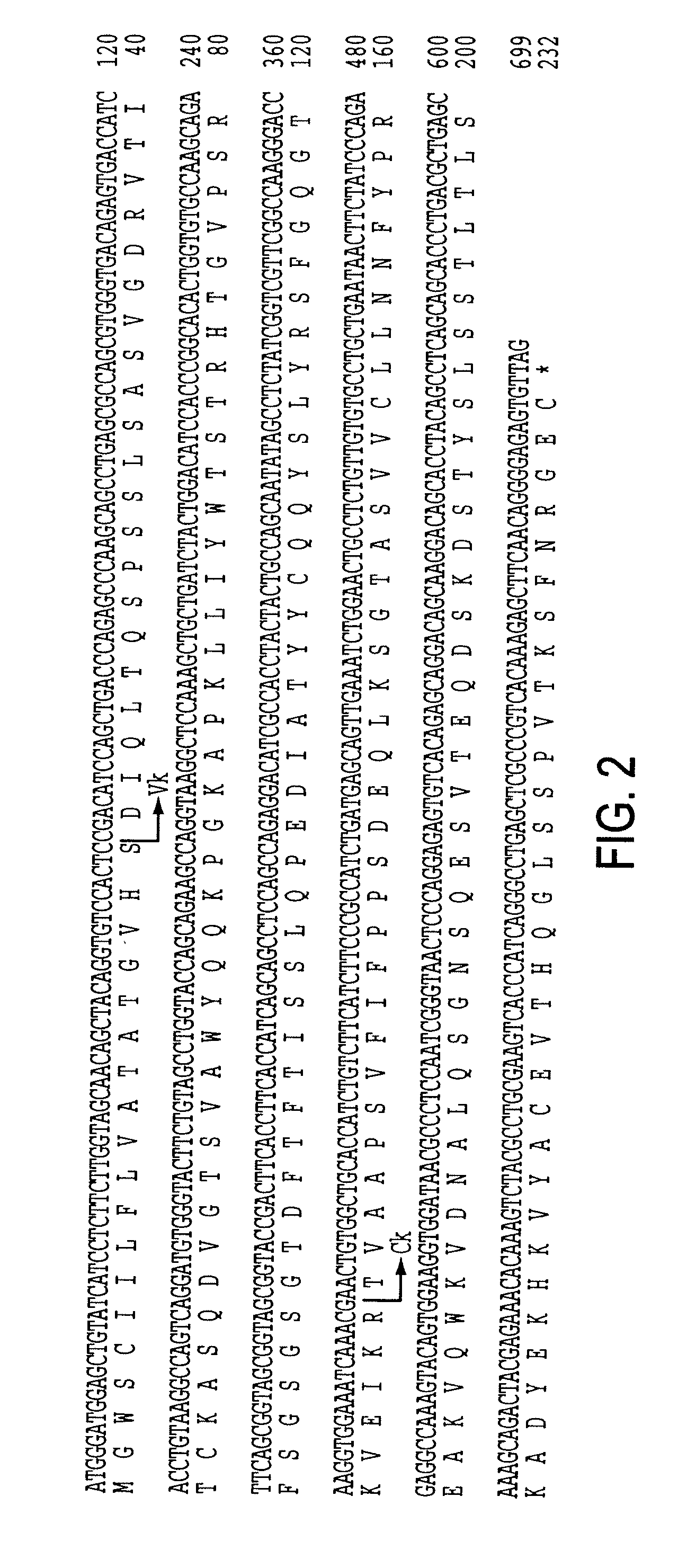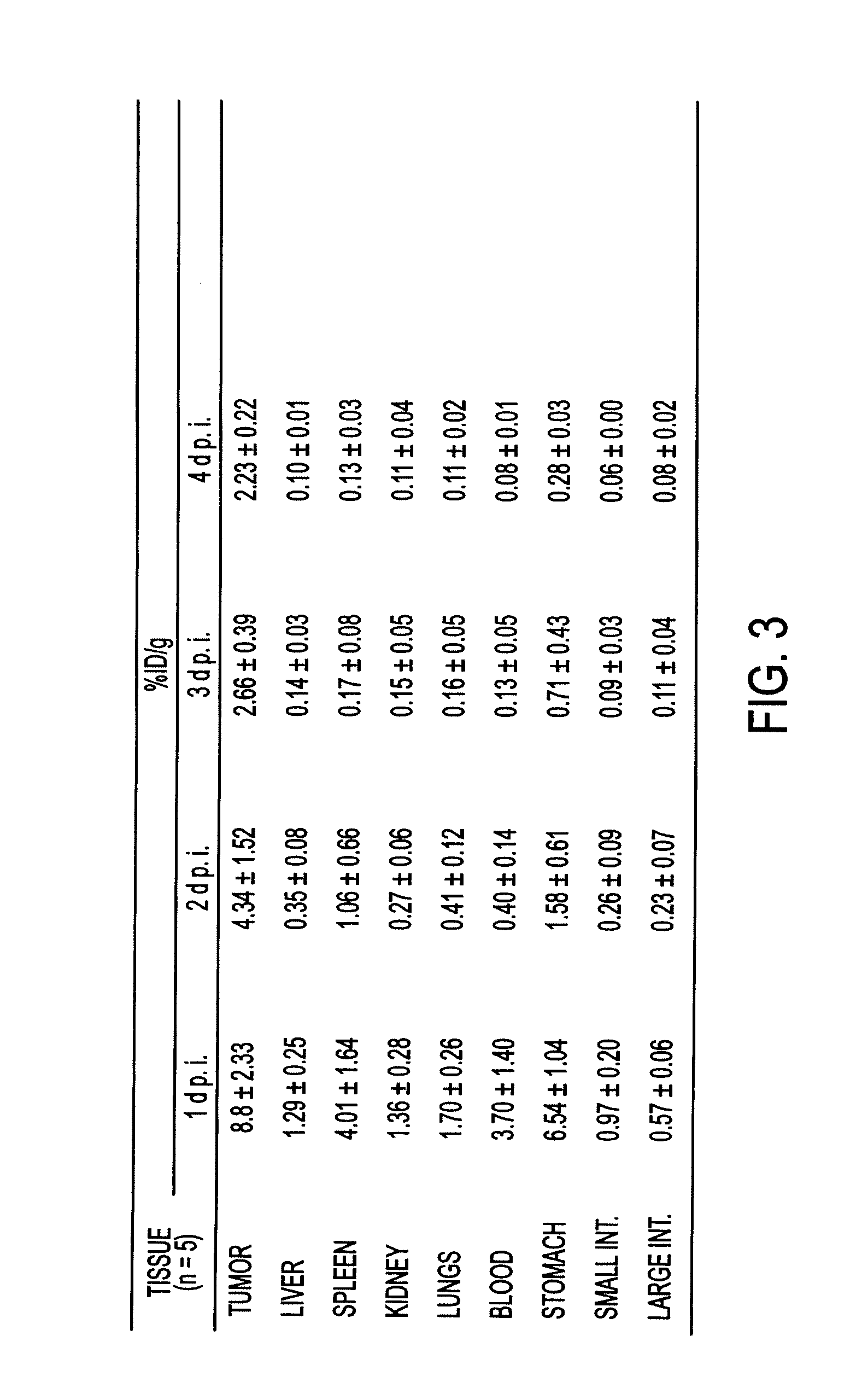Bispecific Antibody Point Mutations for Enhancing Rate of Clearance
a bispecific antibody and point mutation technology, applied in the field of mutation bispecific antibodies, can solve the problems of marrow toxicity, relative small fraction, and inability to tolerate toxicity to the hos
- Summary
- Abstract
- Description
- Claims
- Application Information
AI Technical Summary
Benefits of technology
Problems solved by technology
Method used
Image
Examples
example 1
Biodistribution 125I-hMN-14IgGI253A-(734scFv)2 and 125I-hMN-14IgG-(734scFv)2 in Human Colonic Tumor-Bearing Mice
[0144]Experimental Procedure
[0145]Simple biodistribution patterns of the 125I-hMN-14IgG-(734scFv)2 and 125I-hMN-14IgGI253A-(734scFv)2 were evaluated. Groups of nude female mice bearing GW39 human colonic cancer xenografts received i.v. injections of 20 μg (5 μCi) / mouse of a 125I-labeled parent or mutant bsAb. Mice were euthanized at designed postinjection time points and their organs were removed, weighted and counted for I-125 radioactivity.
[0146]The GW-39 human colonic tumor cell line was propagated as serial, subcutaneous xenografts in nude mice as described elsewhere (Tu, et al. Tumour Biology 9:212-220 (1988)).
[0147]Results
[0148]The tumor and normal tissue biodistribution of 125I-labeled hMN-14IgG-(734scFv)2 and hMN-14IgGI253A(734scFv)2 mutant was examined in human colonic tumor-bearing mice 1, 2, 3 and 4 days postinjection. The results are presented in FIGS. 3 and 4 ...
example 2
Pretargeting of 125I-hMN-14IgGI253A-(734scFV)2 and 125I-hMN-14IgG-(734scFv)2 in Human Colonic Tumor-Bearing Mice
[0150]Experimental Procedure
[0151]Pretargeting biodistribution patterns of mutant and parent bsAbs were evaluated. Groups of nude female mice bearing GW39 human colonic cancer xenografts received i.v. injections of 20 μg (5 μCi) / mouse of a 125I-labeled mutant or parent bsAb. Following the injection of mutant or parent bsAb, a predetermined clearance time was allowed for bsAb to localize to tumor sites and be removed from circulation. The 99mTc-labeled divalent DTPA peptide, IMP-192, was then administered i.v. The mice were sacrificed at various time points of postinjection of the peptide and their organs were removed, weighted and counted for both I-125 and Tc-99m radioactivities.
[0152]The GW-39 human colonic tumor cell line was propagated as serial, subcutaneous xenografts in nude mice as described elsewhere (Tu, et al. Tumour Biology 9:212-220 (1988)).
[0153]Results
[0154]...
example 3
Binding of In-DTPA Containing Peptides to hMN-14IgGI253A-(734scFv)2
[0157]The binding of In-DTPA peptides to the anti-In-DTPA antibody hMN-14IgG(I253A)-(734scFv)2 was examined by size exclusion HPLC and by affinity blocking studies using the Biacore X:
[0158]Binding Analysis Using HPLC
[0159]An IMP 192 kit was labeled with Tc-99m 20.9 mCi. Aliquots from the kit were diluted and mixed with hMN-14IgG(I253A)-(734scFv)2 in the following molar ratios (Peptide / ab) 1:5, 1:1, and 20:1. The peptide / antibody mixtures, the peptide alone and the antibody alone were examined on a Bio-Sil SEC 250 300 mm×7.8 mm HPLC column elluted at 1 mL / min with 0.2 M phosphate buffer pH 6.8. The HPLC traces (FIGS. 8-12 show essentially only one peptide / antibody complex is formed. A known standard of hMN-14IgGI253A-(734scFv)2 eluted from the column at about 9.41 minutes (FIG. 8). A known standard of Tc-99m IMP 192 eluted from the column at about 14.85 minutes (FIG. 9). When a 1:1 mixture of hMN-14IgGI253A-(734scFv...
PUM
| Property | Measurement | Unit |
|---|---|---|
| molecular weight | aaaaa | aaaaa |
| molecular weight | aaaaa | aaaaa |
| molecular weight | aaaaa | aaaaa |
Abstract
Description
Claims
Application Information
 Login to View More
Login to View More - R&D
- Intellectual Property
- Life Sciences
- Materials
- Tech Scout
- Unparalleled Data Quality
- Higher Quality Content
- 60% Fewer Hallucinations
Browse by: Latest US Patents, China's latest patents, Technical Efficacy Thesaurus, Application Domain, Technology Topic, Popular Technical Reports.
© 2025 PatSnap. All rights reserved.Legal|Privacy policy|Modern Slavery Act Transparency Statement|Sitemap|About US| Contact US: help@patsnap.com



